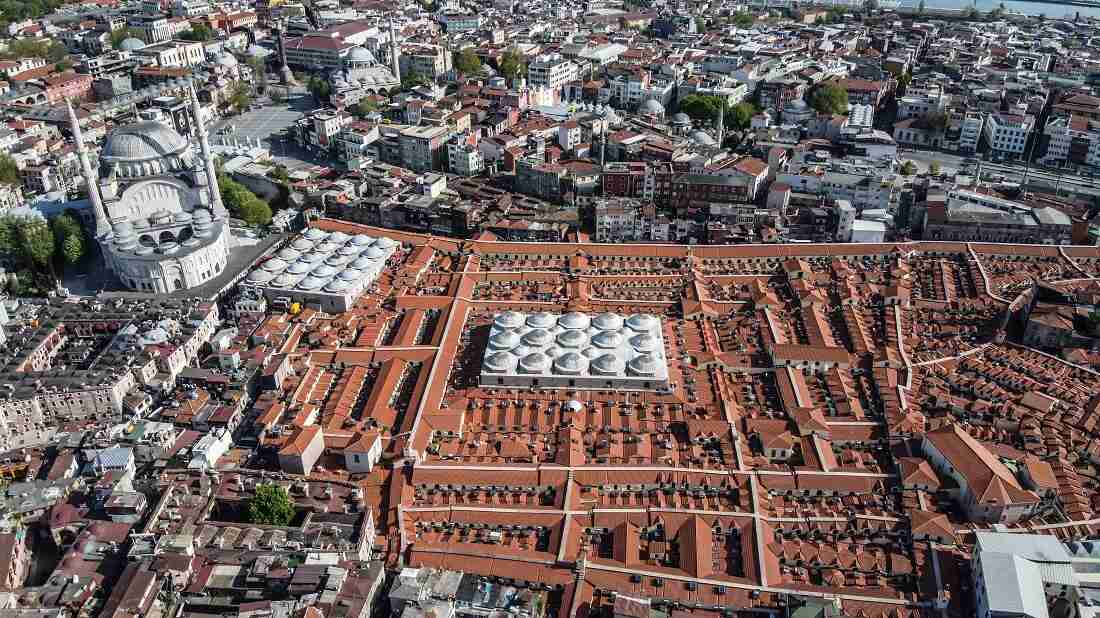
The Grand Bazaar, located in the heart of Istanbul, Turkey, is one of the world’s oldest and largest covered markets. It has been an important hub of trade and commerce for over 500 years. It is still a popular tourist destination today.
The Grand Bazaar has been in continuous operation since the 15th century when the Ottoman Empire peaked. In 1455, Sultan Mehmed II, also known as Mehmed the Conqueror, commissioned the construction of a covered market near the newly built Grand Mosque. The purpose of the market was to create a centralized location for trade and commerce in Istanbul.
Over the centuries, the Grand Bazaar expanded and grew in importance. By the 17th century, it had become a bustling hub of activity with over 4,000 shops and stalls. Traders worldwide came to the Grand Bazaar to buy and sell a wide range of goods, including textiles, spices, jewelry, and ceramics.
The Grand Bazaar played an essential role in Turkish culture and economy. It was a center for trade and a gathering place for locals and tourists alike. The market was known for its vibrant atmosphere, with vendors haggling over prices and customers searching for the best deals.
In addition to its economic importance, the Grand Bazaar also had a significant cultural impact. The market reflected Istanbul’s rich history and diverse cultural influences. It was a place where people from all walks of life could come together and exchange ideas, traditions, and customs.
The Grand Bazaar remains an essential part of Turkish culture and economy today. It is a significant commercial and tourist district in Istanbul, drawing in millions of people annually. The market is a must-see for anyone interested in Turkish history and culture because of how important it is historically and culturally.
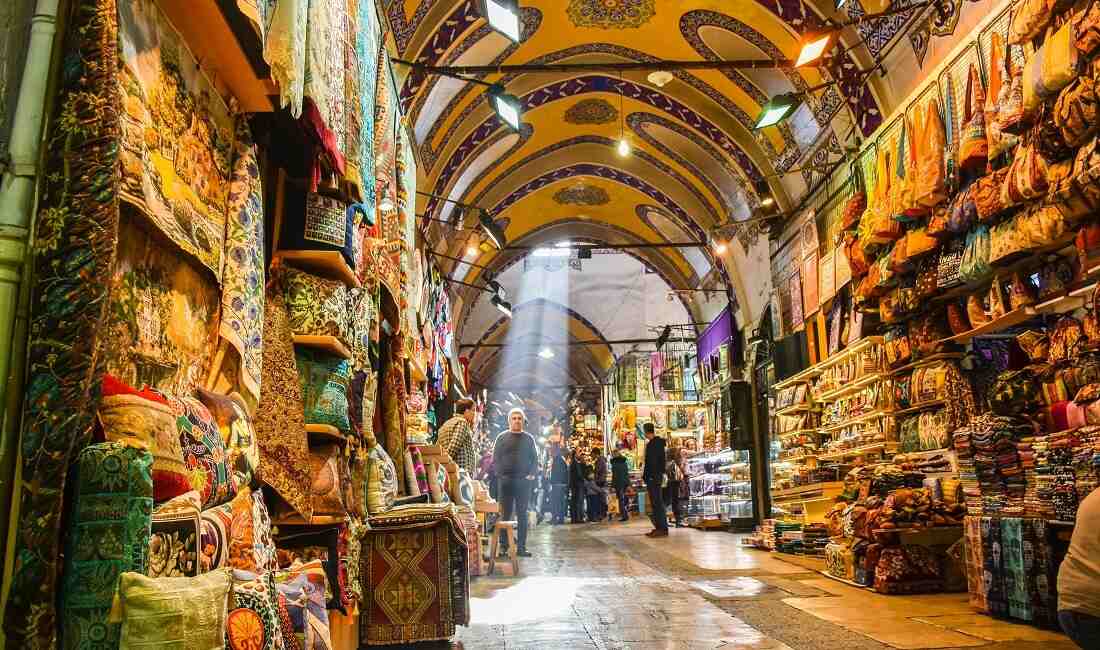
The Grand Bazaar of Istanbul, Turkey, is in the city’s historic Beyazit quarter. The market covers an area of over 31,000 square meters and consists of over 60 streets and alleys. The bazaar is easily accessible by public transportation. In addition, it is near many of Istanbul’s other famous landmarks, such as the Blue Mosque and the Hagia Sophia.
The layout of the Grand Bazaar is designed like a maze, with a network of covered streets and alleys leading visitors through the market. The market is divided into different sections, each with its special and unique character. Customers can quickly navigate to the products they seek thanks to the store’s well-thought-out organizational structure.
The Goldsmiths’ Street in the Grand Bazaar is an iconic attraction. Here, visitors can find various gold and silver jewelry, including traditional Ottoman designs and modern styles. The street is also home to many skilled jewelers who create custom pieces for customers.
The leather goods section is another popular area of the market. Here, visitors can find high-quality leather products, including jackets, bags, and shoes. In addition, the Grand Bazaar sells many handmade leather goods made by skilled artisans using traditional methods.
The textile section of the Grand Bazaar is known for its beautiful fabrics and intricate designs. Visitors can find a wide variety of textiles, including silk, cotton, and wool, as well as traditional Ottoman materials like Iznik ceramics and Turkish carpets.
The Spice Bazaar is another famous section of the market. Here, visitors can find a wide variety of spices, herbs, and teas, as well as traditional Turkish sweets like lokum (Turkish delight). The Spice Bazaar has a rich history since the 17th century when it was an important hub of trade for spices worldwide.
Overall, the Grand Bazaar is set up so that shoppers have a unique and memorable shopping experience. With its winding streets, bustling atmosphere, and diverse range of goods, the market is a must-visit destination for anyone traveling to Istanbul.
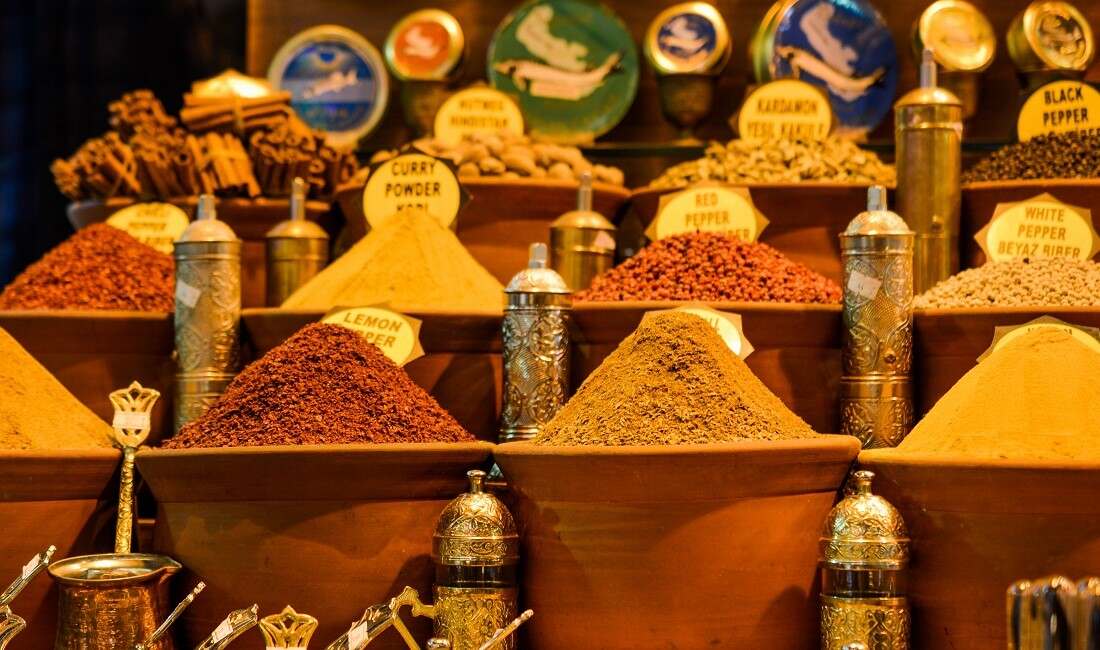
The Grand Bazaar in Istanbul has a rich and thrilling history that dates back to the 15th century. The bazaar was established in 1455, just a few years after the Ottoman Empire’s conquest of Constantinople in 1453. Then, the Ottoman Empire’s leaders recognized the strategic importance of Constantinople as a significant center of trade and commerce. Establishing the Grand Bazaar was part of their efforts to develop the city as a critical hub for international trade.
The bazaar quickly became an essential destination for merchants worldwide, who came to buy and sell various goods. With its strategic location at the crossroads of Europe and Asia, Istanbul was ideally situated to serve as a meeting point for traders from the Middle East, Europe, and beyond. The Grand Bazaar played a crucial role in facilitating these trade networks, providing a space where merchants could exchange goods and ideas.
Over time, the Grand Bazaar grew in size and complexity, with new sections and streets added to accommodate more vendors and shoppers. By the 17th century, the bazaar had become one of the largest and most important marketplaces in the world, with thousands of shops and stalls selling everything from textiles and ceramics to spices and jewelry. As a result, the bazaar became a center of cultural and economic life in Istanbul and played an essential role in shaping the city’s identity as an important trading center.
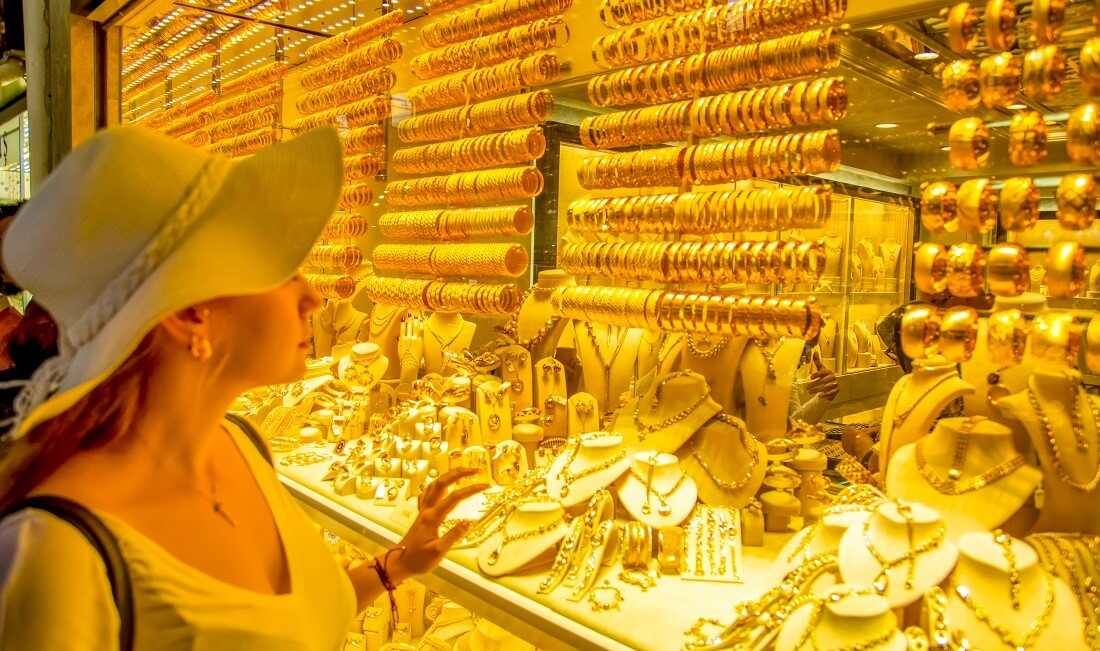
In the 17th century, the Grand Bazaar had grown significantly in size and complexity. New sections and streets were added to the market, making it one of the world’s largest and most essential marketplaces. The bazaar became a trade hub, with thousands of vendors and shoppers from around the globe visiting Istanbul to buy and sell goods.
The Grand Bazaar has been known for centuries for its diverse range of products, including textiles, ceramics, spices, jewelry, carpets, and more. Many of the goods sold in the bazaar were imported from other parts of the Ottoman Empire, such as Persia, Egypt, and India. The bazaar was also an important center for producing and selling Turkish carpets and kilims, which were highly prized for their intricate designs and high quality.
Throughout its history, the Grand Bazaar has played an important role in Turkish society and culture. The market has served as a gathering place for people and has played a central role in Istanbul’s social and economic life. The bazaar has also been a source of inspiration for artists and writers, with many famous works of literature and art depicting the bustling and colorful atmosphere of the market. Today, the Grand Bazaar remains an integral part of Turkish culture and society, attracting visitors worldwide who come to experience its unique atmosphere and rich history.
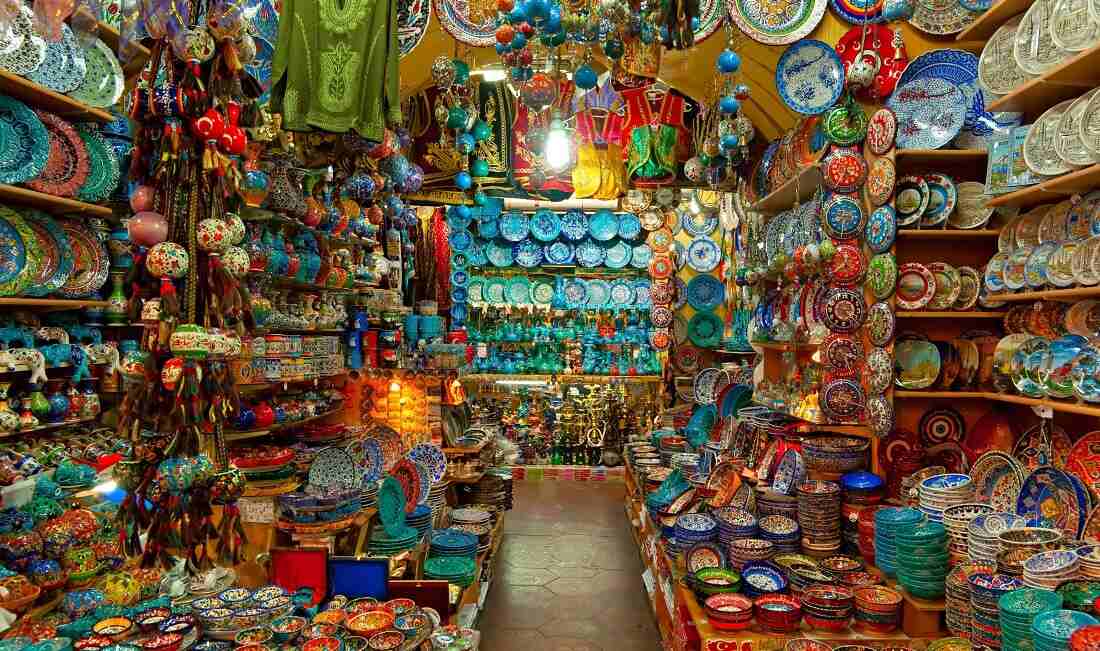
Shopping at the Grand Bazaar can be an exciting and overwhelming experience for visitors. With its labyrinthine layout and thousands of shops and stalls, it can be easy to get lost or feel intimidated by the vendors. However, with a few tips and tricks, navigating the bazaar and bargaining with vendors can be a fun and rewarding experience.
One of the most important tips for shopping at the Grand Bazaar is to be prepared to bargain with vendors. Bargaining is common in Turkey, and vendors at the bazaar expect customers to negotiate prices. However, you should keep in mind that the vendor’s initial price quote is frequently much higher than the item’s actual value, so feel free to offer a lower price and negotiate until you find a fair price.
Another helpful tip for shopping at the Grand Bazaar is to dress comfortably and wear comfortable shoes. The market can be crowded and chaotic, and visitors can easily spend hours exploring its winding streets and alleys. It is also essential to bring cash, as many vendors do not accept credit cards.
The Grand Bazaar is known for its various products, including textiles, jewelry, ceramics, spices, and more. Visitors can find beautiful fabrics and intricate designs in the textile section. At the same time, Goldsmiths’ Street offers various gold and silver jewelry. The Spice Bazaar is a popular destination for those interested in Turkish cuisine, with a wide variety of spices, herbs, and teas available for purchase.
There are many famous shops and stalls to visit at the Grand Bazaar. One of the most famous is the Arasta Bazaar, located just outside the Grand Bazaar and known for its beautiful textiles and ceramics. Another popular destination is the Grand Bazaar’s Carpet section, which offers a wide variety of hand-woven Turkish carpets and kilims.
Overall, shopping at the Grand Bazaar is an unforgettable experience that offers a glimpse into Turkey’s rich cultural heritage and vibrant marketplace. With a bit of preparation and a willingness to bargain, visitors can find unique and high-quality products.
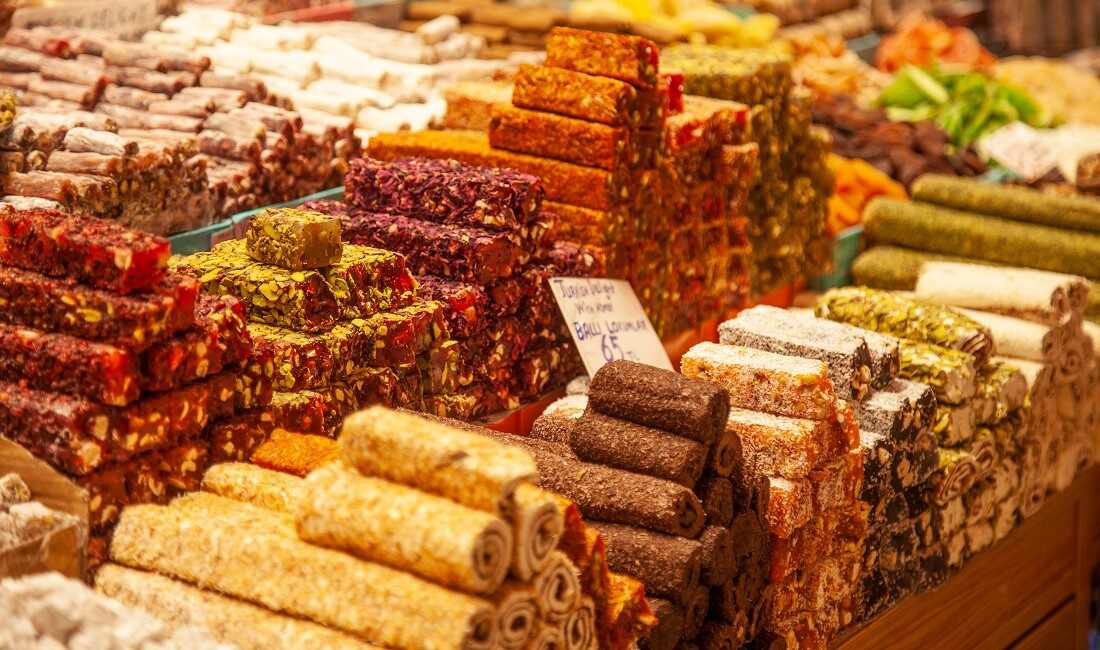
The Grand Bazaar in Istanbul is a hub for shopping, food, and drink. The bazaar offers various options for hungry shoppers, including traditional Turkish dishes, street food, and international cuisine.
One of the most famous dishes at the bazaar is the Turkish kebab. Made with marinated meat that is grilled over an open flame, the kebab is a staple of Turkish cuisine and is available in many different variations at the bazaar. Another famous food in the bazaar is “döner.” There are some ancient and small restaurants where you can eat delicious “döner.” Other popular dishes include gözleme, a savory Turkish pastry filled with cheese, spinach, or meat, and simit, a type of bread similar to a bagel coated in sesame seeds and often eaten as a snack.
The bazaar also has a variety of desserts and pastries for those with a sweet tooth, such as baklava, a rich and flaky pastry made with layers of very thin dough, nuts, and syrup, and Turkish delight, a chewy confection made with sugar and starch that comes in a variety of flavors.
When it comes to drinks, Turkish tea, and coffee are must-tries. Turkish tea, known as çay, is a solid and aromatic tea typically served in small glasses with sugar cubes on the side. On the other hand, Turkish coffee is a thick and strong coffee brewed in a small pot called a cezve and served in small cups.
Food and drink are essential parts of Turkish culture. The Grand Bazaar reflects this in the wide variety of food and drink options available. Many of the dishes and drinks available at the bazaar have their roots in Ottoman cuisine and have been passed down through generations of Turkish families. The bazaar’s food stalls and restaurants also allow visitors to experience Turkish hospitality and culture firsthand, as vendors often offer samples and engage in friendly conversation with customers.

The Grand Bazaar is closed on Sundays. The bazaar can get quite crowded, especially on Saturdays and during peak tourist season, so visiting in the early morning or late afternoon is recommended to avoid the largest crowds. We recommend wearing comfortable shoes and clothing. The bazaar can be pretty busy, and navigating the narrow passageways and stairs can be challenging. Visitors should also be ready to haggle with sellers at the bazaar, as this is the norm. Overall, visiting the Grand Bazaar in Istanbul is a must-do experience for anyone interested in Turkish culture and history. With a bit of planning, it can be an unforgettable adventure.
The bazaar’s importance in Turkish culture stems from its rich history and role as a hub for trade and commerce. The bazaar has been a center for business in Istanbul since the Ottoman era. In addition, being at the crossroads of two continents has made it a vital hub for exchanging goods and ideas. Today, the bazaar is still an important economic and cultural center in Istanbul. It attracts many tourists every year and showcases Turkish art and culture.
The Grand Bazaar offers tourists a unique opportunity to experience Turkish culture firsthand. Visitors can shop for souvenirs, sample local food and drink, and explore the bazaar’s historic buildings and architecture. The bazaar’s labyrinthine layout can be overwhelming for first-time visitors, but with a bit of patience and a sense of adventure, navigating the bazaar can be a rewarding experience.
In conclusion, the Grand Bazaar is an essential destination for anyone interested in exploring Turkish culture and history. Its vibrant atmosphere, rich history, and diverse offerings make it a must-see destination for visitors to Istanbul. However, to make the most of a visit to the bazaar, it’s recommended to allow plenty of time to explore and take in the sights, sounds, and flavors of this unique cultural landmark.
